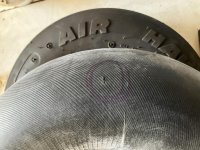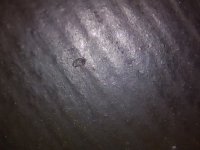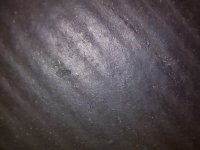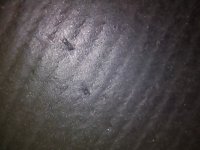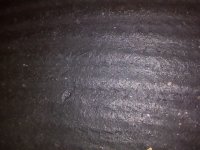A bit of background:
I have never had a flat tire on an airplane and this one hit me by surprise.
Last condition inspection in January of this year, I installed a new nose wheel tire and a new tube. At almost 700 hours of service without needing anything not even air, I decided to be pro active and replace something that wasn't broken.
About 50 hours into the new tire, we taxied back after a lunch fly out and came to rest in front of my hangar with a completely flat front tire.
In order to push the RV-10 into the hangar, I had to inflate it but we barely made it past the hangar door before it was completely flat again.
Removing the wheel and tire revealed a cut as seen in the picture and I cannot figure out how this happened. I do not make short cuts, the tire and tube was properly installed with plenty of talcum powder and the location of the cut does not appear to be the result of a pinch or other installation error. What have I missed here?? the tube and tire have been sitting in my hangar for at least a couple of years. The only thing I can think of is the folded tube aging and suffering heat damage. Is this a possible explanation?
The tubes are whatever Van's sells along with the tire.
I have never had a flat tire on an airplane and this one hit me by surprise.
Last condition inspection in January of this year, I installed a new nose wheel tire and a new tube. At almost 700 hours of service without needing anything not even air, I decided to be pro active and replace something that wasn't broken.
About 50 hours into the new tire, we taxied back after a lunch fly out and came to rest in front of my hangar with a completely flat front tire.
In order to push the RV-10 into the hangar, I had to inflate it but we barely made it past the hangar door before it was completely flat again.
Removing the wheel and tire revealed a cut as seen in the picture and I cannot figure out how this happened. I do not make short cuts, the tire and tube was properly installed with plenty of talcum powder and the location of the cut does not appear to be the result of a pinch or other installation error. What have I missed here?? the tube and tire have been sitting in my hangar for at least a couple of years. The only thing I can think of is the folded tube aging and suffering heat damage. Is this a possible explanation?
The tubes are whatever Van's sells along with the tire.

